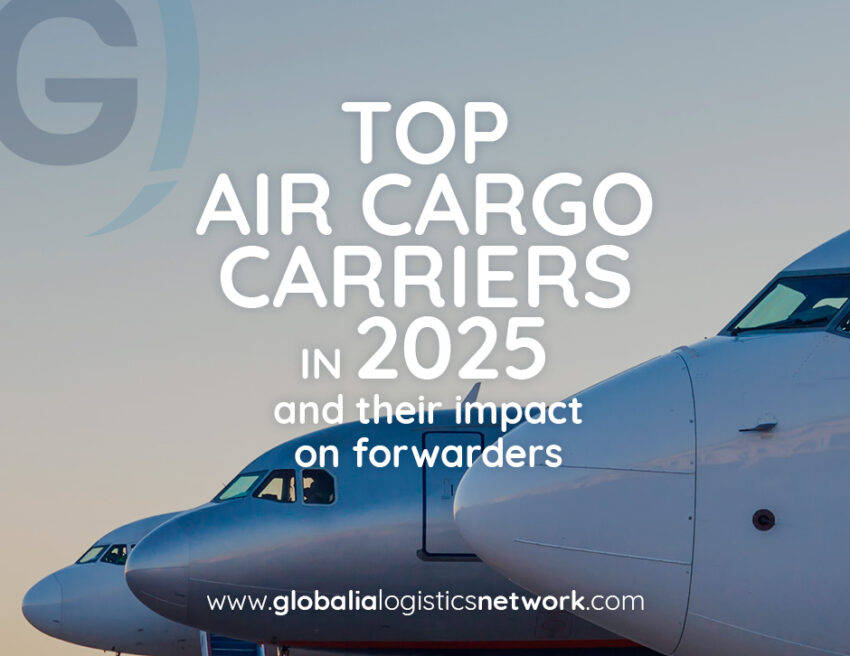If you’re in freight forwarding, air cargo is where speed meets margin pressure. You already know the story—clients want faster deliveries, tighter tracking, and competitive pricing, while capacity keeps shifting with every geopolitical move or fuel cost spike. Here’s the question you should be asking right now: Which airlines will dominate the skies in 2025, and how will that shape the way I serve my customers? Understanding the top air cargo carriers 2025 isn’t just about trivia. It’s about knowing where capacity is growing, which routes are becoming stronger, and which partnerships can protect you when rates fluctuate. Let’s dig into the carriers leading the market and what forwarders should expect in the year ahead.

The heavyweights are still on top
The biggest names haven’t gone anywhere. These carriers continue to dominate the global market in 2025:
-
Emirates SkyCargo – Leveraging Dubai’s central hub to connect East-West trade lanes, Emirates is expanding its widebody fleet and offering premium capacity for high-value cargo.
-
Qatar Airways Cargo – Known for aggressive growth, Qatar has added more freighters and extended reach into secondary airports, making it a go-to for flexible routing.
-
FedEx and UPS – Still essential for e-commerce and express cargo, both integrators continue to pour resources into automation and last-mile networks.
-
Lufthansa Cargo – Anchored in Europe, Lufthansa remains reliable for industrial shipments, pharmaceuticals, and transatlantic routes.
-
Cargolux – As an all-cargo carrier, it keeps its edge by serving niche markets and operating efficiently out of Luxembourg.
For forwarders, these giants bring scale and predictability—but often at a cost, since their dominance comes with tighter control over pricing and contracts.
Rising regional leaders
2025 is also highlighting the rise of carriers with regional strength but growing global ambitions:
-
Turkish Cargo – Using Istanbul as a strategic crossroads, Turkish Cargo is positioning itself as a bridge between Europe, Asia, and Africa. Its rapid expansion makes it one of the fastest-growing names in global air freight.
-
Ethiopian Airlines Cargo – Africa’s largest cargo airline continues to scale up, connecting manufacturers and farmers to Europe, Asia, and the Middle East with competitive rates and modern freighters.
-
LATAM Cargo – With strong networks across Latin America, LATAM is increasingly vital for forwarders moving perishables, textiles, and consumer goods into North America and Europe.
These airlines are forcing the market open. They provide forwarders with more flexibility on routes that were once dominated by only a handful of players.
The e-commerce game changers
Parcel demand isn’t slowing down. A few carriers stand out in 2025 for their role in the booming e-commerce trade:
-
Amazon Air – Expanding fleet size and flight frequency in North America and Europe, offering unmatched speed for direct-to-consumer cargo.
-
SF Airlines – China’s e-commerce giant continues to scale up international routes, making it a critical link for cross-border B2C shipments.
-
UPS and FedEx – Already leaders in this segment, their global networks remain the backbone of online retail logistics.
Forwarders need to recognize that these players set service benchmarks for speed and reliability, influencing shipper expectations across the board.
Technology and innovation as differentiators
Among the top air cargo carriers 2025, technology adoption is separating the leaders from the rest.
-
Qatar Airways Cargo and Emirates are pushing digital booking and real-time visibility tools.
-
FedEx and UPS continue heavy investment in automated sortation and AI route planning.
-
Lufthansa Cargo has expanded its digital platform, making integrations easier for forwarders booking space.
The winners are those who make capacity easier to access and tracking more transparent.
Sustainability as a competitive edge
The green transition is no longer optional. Top carriers are under increasing regulatory and customer pressure to cut emissions.
-
Emirates and Qatar Airways are investing in sustainable aviation fuel (SAF) initiatives.
-
Lufthansa Cargo is leading in carbon reporting, offering shippers emissions data for each shipment.
-
FedEx has pledged net-zero carbon operations by 2040, an ambitious target that positions it as a frontrunner in sustainability.
This is reshaping the way forwarders choose carriers—sustainability is becoming as important as price and service reliability.
What this means for forwarders in 2025
The top air cargo carriers in 2025 set the pace for the industry. For forwarders, the impact is direct:
-
Larger carriers bring stability but can be rigid on pricing.
-
Regional players create new opportunities in emerging markets.
-
E-commerce carriers raise expectations for speed.
-
Green investments by carriers influence how forwarders market their services to shippers.
The smart move is to track which carriers are expanding capacity on your core lanes, diversify your partnerships, and leverage technology integrations where possible.
Final thoughts
The ranking of the top air cargo carriers 2025 isn’t just about who’s flying the most planes, it’s about who’s shaping the future of the industry. From the traditional heavyweights to the rising challengers, these airlines will decide how forwarders buy capacity, control costs, and serve clients in the year ahead. For anyone in forwarding, knowing the strengths and strategies of these carriers is the edge that keeps you competitive.


